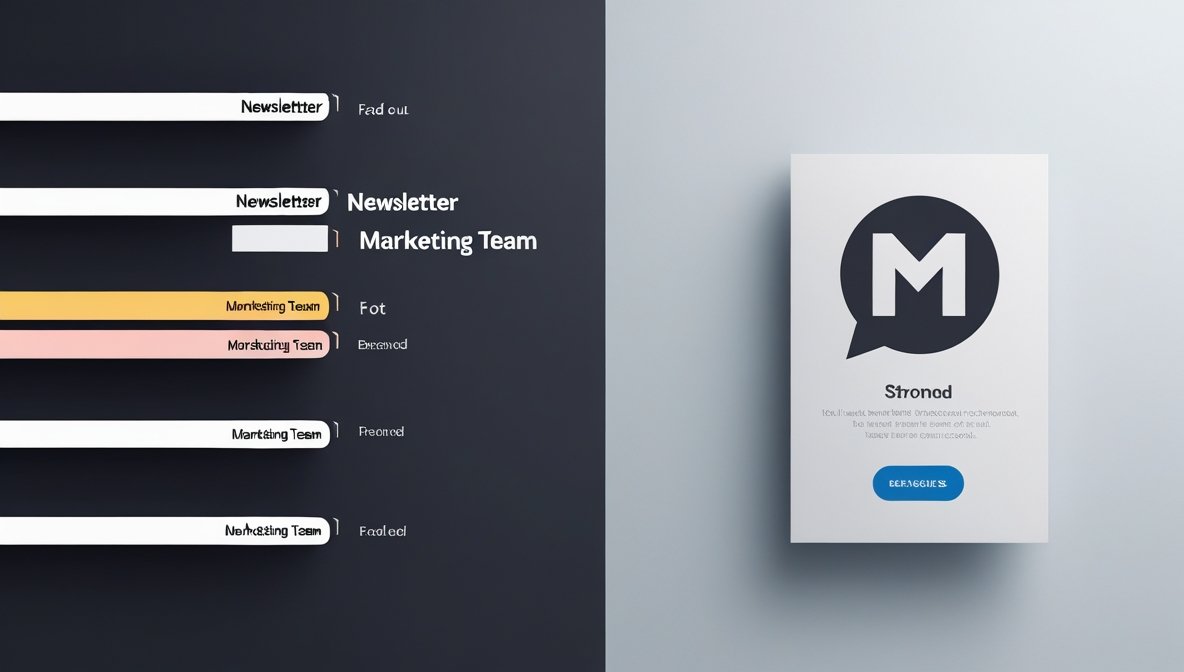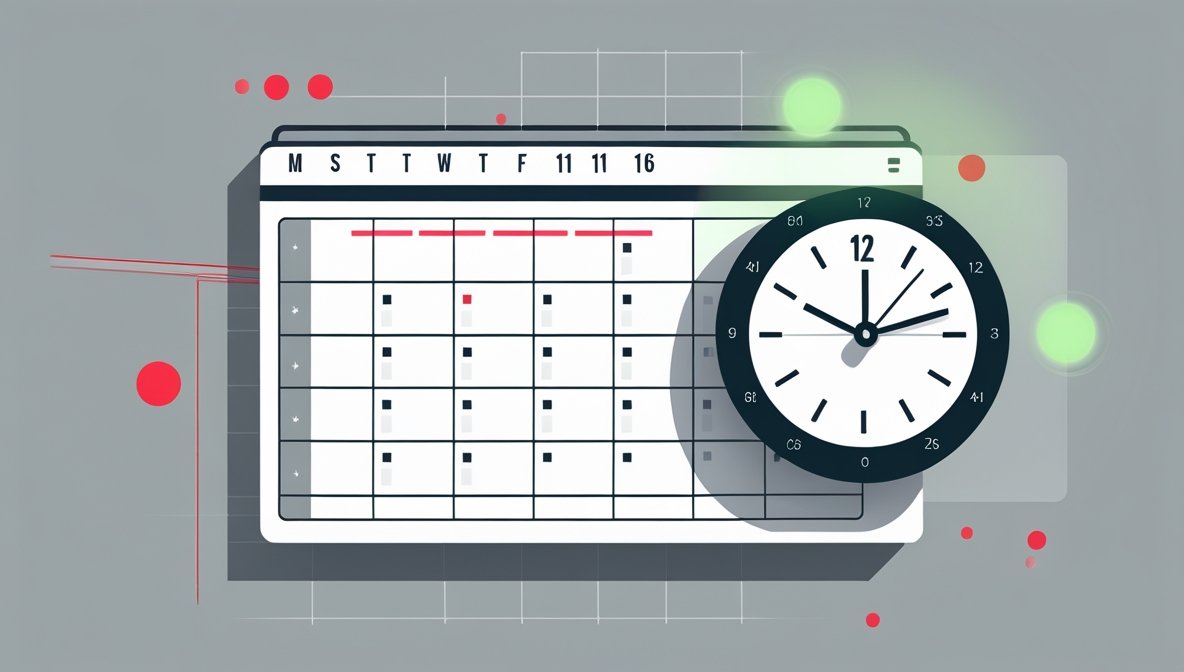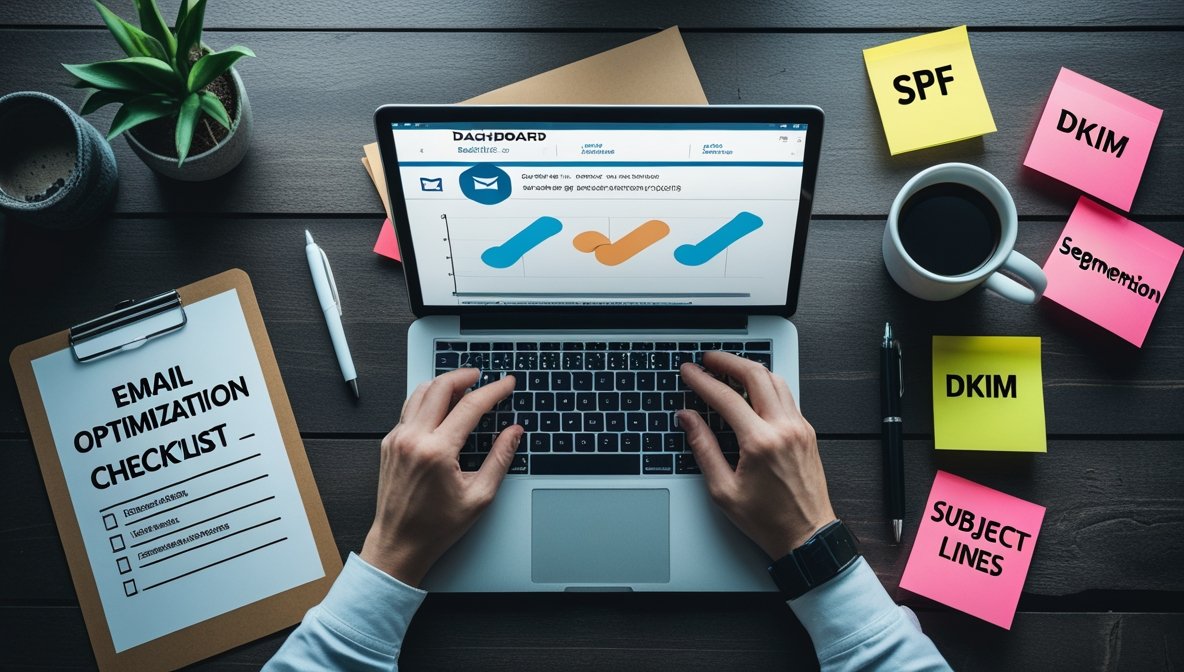Table of Contents
- Why People Ignore Most Emails
- The Real Reason Your Emails Don’t Get Opened: Your Sender Identity Is Broken
- Your Subject Lines Are Triggering the Wrong Brain Responses
- Your Emails Don’t Get Opened Because the Algorithm Already Decided They Shouldn’t
- Your Timing and Frequency Are Working Against You
- Your Content Strategy Doesn’t Create Anticipation
- Your List Isn’t Segmented — and It Shows
- Your Audience Signed Up for One Thing and You Delivered Something Else
- Actionable Fixes That Turn Open Rates Around Fast
- Final Call to Action
Why People Ignore Most Emails
Inbox behavior is governed by attention economics. Most people don’t calmly review each subject line and decide what’s valuable. They scroll on instinct, filtering threats, noise, and mental effort. If your email doesn’t immediately signal safety, relevance, and clarity, it’s mentally archived before it ever gets opened.
Four forces dominate those split-second decisions:
1. Instant inbox triage
People skim based on sender recognition and emotional expectation. If the name in the “From” field doesn’t ring a bell or doesn’t trigger a positive memory, your chances drop instantly. If past emails felt salesy, confusing, or irrelevant, the reflex is to ignore, not to give you another shot.
2. Algorithmic trust signals
Email providers don’t treat all senders equally. They track engagement history, domain reputation, spam complaints, and deletions. If your metrics trend downward, your messages get nudged toward the promotions tab or, worse, the junk folder. Fewer people even see your emails, so open rates tank regardless of how good the content is.
3. Cognitive friction
Vague subject lines, inconsistent branding, and mixed messaging create tiny moments of confusion. That 200-millisecond pause while someone tries to figure out what your email is about? That’s often all it takes for their thumb to keep scrolling past your message.
4. The relevance gap
If your message doesn’t align with what’s actually important in your subscriber’s life today, it becomes invisible. Relevance isn’t about what you want to promote — it’s about matching their current goals, pain points, and priorities.
Put together, these forces quietly shape whether your emails earn attention or get ignored without a second thought.

The Real Reason Your Emails Don’t Get Opened: Your Sender Identity Is Broken
The inbox isn’t just a battlefield of promotions; it’s a battlefield of recognition. Your sender identity is the single biggest determinant of whether people give you the benefit of the doubt and click.
1. You blend in with generic senders
If your sender name looks like:
- “Marketing Team”
- “Newsletter”
- “Support”
- “Updates”
…you’re basically anonymous. People ignore faceless senders because they’ve learned those emails tend to be transactional, boring, or self-serving.
2. Your email address lacks authority
Addresses like noreply@, info@, or admin@ erode trust. They feel corporate, distant, and unresponsive. They also trip certain filters and thresholds in some providers.
A humanized address — something like danilo@yourbrand.com — creates an emotional anchor. It signals there’s a person behind the message, not just a system.
3. Your brand voice is inconsistent
When your emails sound excited one day, stiff and corporate the next, and desperate a week later, subscribers feel like they’re hearing from different people every time. That inconsistency breeds mistrust and fatigue.
Inboxes reward consistency. Algorithms do too. A clear, stable identity trains both people and machines to recognize you as safe and worth opening.

Your Subject Lines Are Triggering the Wrong Brain Responses
Open rates aren’t driven purely by curiosity; they’re driven by how the brain evaluates risk, effort, and reward in under a second. When someone scans their inbox, they’re silently asking: “Is this safe? Is this relevant? Is this worth the energy?”
If your subject lines fail any of those checks, they get skipped. Here’s what typically goes wrong.
1. You’re overusing marketing language
Words like “free,” “sale,” “exclusive,” or “limited time” have been hammered to death. Filters see them as lower-quality signals, and human readers mentally group them with noisy promos. Overusing them trains subscribers to treat your messages like background ads.
2. You’re hiding the real reason to open
Subject lines like:
- “Quick question”
- “Important update”
- “Did you see this?”
might sound intriguing, but they often feel manipulative because they don’t clearly state what’s inside. When they don’t match your historical communication style, they create suspicion rather than curiosity.
3. You’re not aligning with user intent
Every inbox action is driven by intent. If someone is trying to solve a specific problem or move a project forward, and your subject line doesn’t speak to that, it becomes irrelevant noise — no matter how clever it sounds.
4. You’re not using preheader real estate
The preheader text is prime real estate that most senders waste. When used properly, it can clarify the promise in your subject line, reduce risk, and double your chances of getting opened. When it just repeats the subject or defaults to “view this email in your browser,” you’ve thrown away an easy advantage.

Your Emails Don’t Get Opened Because the Algorithm Already Decided They Shouldn’t
It’s easy to blame your audience for low open rates. But the real gatekeeper is the filtering system deciding which emails deserve inbox placement and which should be buried.
1. Engagement profiles
Providers build an engagement profile for every sender. They watch opens, clicks, deletions, spam complaints, and how fast people interact. If engagement drops, your messages get throttled, shuffled into promotions, or quietly deprioritized.
Low engagement → worse placement → fewer opens → even worse placement. It becomes a self-reinforcing downward spiral.
2. Negative weighting
Enough of the wrong behaviors, and your reputation takes a hit. If people repeatedly:
- delete without reading,
- mark your emails as spam,
- or stop engaging altogether,
…you get downgraded. Even great campaigns struggle to reach the inbox once that negative score builds up.
3. Poor list quality
Inactive subscribers quietly poison your sender score. If your list isn’t regularly cleaned, warmed, and segmented, you’re training algorithms to treat your emails as low-priority by default.
4. Lack of authentication
Missing or misconfigured SPF, DKIM, and DMARC records instantly raise red flags. Without strong authentication, your emails are more likely to be filtered, throttled, or blocked — long before your subscribers ever see them.
If your infrastructure isn’t trusted, your open rate problems start long before the subject line.

Your Timing and Frequency Are Working Against You
Even if your content and infrastructure are on point, bad timing and inconsistent frequency can quietly crush performance. Most inboxes are chaotic in the mornings and early afternoons, especially on Mondays and at the start of the month.
Common timing mistakes that kill open rates
- Sending during peak competition hours when everyone else blasts their list.
- Sending daily with no engagement strategy, creating fatigue instead of familiarity.
- Sending too infrequently, so subscribers forget who you are between campaigns.
- Sending at rigid, predictable times without considering behavioral patterns.
Optimal timing isn’t generic; it varies by industry, audience, and engagement stage. Guessing based on “best practices” is a shortcut to mediocre results. Behavioral timing — sending when your subscribers actually tend to open and click — is the real advantage.

Your Content Strategy Doesn’t Create Anticipation
People open emails when they expect something valuable on the other side of the click. If your content strategy is a mix of random tips, hard sells, sporadic updates, and inconsistent quality, your audience learns not to expect much. And they stop opening.
Three drivers make your emails worth anticipating:
1. Narrative continuity
When your emails connect like chapters in an ongoing story — with threads, callbacks, and progress — people feel pulled forward. They open the next message because they want to see what happens next.
2. Value stacking
Every email should deliver something that feels undeniably useful: a sharper insight, a shortcut, a clearer decision, or a new opportunity. The more consistently you deliver wins, the more your subscribers start to see your name as a shortcut to value.
3. Pattern reinforcement
Readable formatting, consistent tone, and a recognizable structure dramatically reduce cognitive drag. When people know what to expect — and they like that pattern — they open more often and more quickly.
Once subscribers trust that your emails are worth their attention, they don’t just tolerate your presence in the inbox; they look for it.
Your List Isn’t Segmented — and It Shows
Segmentation is a force multiplier that most senders underuse. When everyone gets the same message, at the same time, regardless of behavior or interests, your relevance tanks — and so do your open rates.
Segmentation fixes three critical issues
1. Relevance
When people receive emails tailored to their actions, preferences, or stage in the customer journey, engagement jumps. They feel seen, not spammed.
2. Predictability
Algorithms interpret targeted, high-engagement sends as a sign of quality. That means better inbox placement, which makes all of your future campaigns more effective.
3. Personal resonance
Segmentation lets you talk to people like individuals instead of blasting at a crowd. When your content matches their behavior and intent, opens become the default, not the exception.
With the right segmentation, your open rates stop depending on luck and start following a repeatable pattern.

Your Audience Signed Up for One Thing and You Delivered Something Else
One of the fastest ways to destroy open rates is to break the expectation contract you set at the moment of signup. If people joined your list for one specific type of value and then you switched gears, they quietly disconnect.
Signs you’ve drifted off-course
- Your opt-in promised content you don’t consistently deliver.
- You shifted topics too quickly without bringing your audience along.
- You replaced education and insight with constant promotions.
- Your emails feel brand-centered instead of subscriber-centered.
When your content no longer matches the original promise, most people don’t bother unsubscribing. They just stop opening. To them, the inbox is already overloaded — your emails become another thing to ignore.

Actionable Fixes That Turn Open Rates Around Fast
The good news: the same forces that quietly destroy open rates can be flipped in your favor. Here’s a streamlined blueprint to start moving your metrics in the right direction quickly.
1. Rebuild your sender identity
Choose a clear, human sender name and stick with it. Pair it with a real email address, not a system label. Train subscribers and inbox providers to recognize you at a glance.
2. Redesign subject lines around clarity and specificity
Focus each subject line on a single idea. Make the benefit explicit, connect it to real-world outcomes, and avoid vague hooks that sound like clickbait.
3. Clean your list aggressively
Remove or re-engage cold subscribers. Inactive contacts drag down your sender score and hurt inbox placement for the people who actually want to hear from you.
4. Authenticate your domain
Get SPF, DKIM, and DMARC configured correctly. This is non-negotiable if you’re serious about long-term inbox performance.
5. Segment based on behavior
Separate highly engaged subscribers from cold ones. Tailor frequency, offers, and messaging to how people actually interact with your emails.
6. Shorten and optimize your preheaders
Use preheader text to support and clarify your subject line. Treat it like a subheadline, not an afterthought.
7. Adjust your frequency to reset engagement
If your list has been hammered with too many campaigns, reduce volume temporarily. Focus on high-value, high-impact messages that rebuild trust.
8. Create a content rhythm
Design a repeatable structure for your emails: a quick hook, a clear payoff, and a single focused call to action. Make your format recognizable and easy to consume.
9. Warm up your domain again if needed
If your reputation is badly damaged, start by sending only to the most engaged segment, then gradually scale volume as engagement improves.
10. Test one variable at a time
Don’t change everything at once. Isolate subject line structure, timing, or segment and test changes one by one. That’s how you identify what actually moves the needle.
This is how you shift from open rates that feel random and disappointing to results you can engineer and improve with intention.
Final Call to Action
If you’re tired of wondering why your emails never get opened, it’s time to stop guessing and start working with the real rules of the inbox. Align your sender identity, infrastructure, content strategy, timing, and segmentation with how people and algorithms actually behave, and your open rates stop being a source of stress and start becoming a competitive advantage.
Use this breakdown as your playbook. Audit your next campaign against these points, adjust the weakest areas, and watch how quickly your inbox performance starts to shift in your favor.




0 Comments